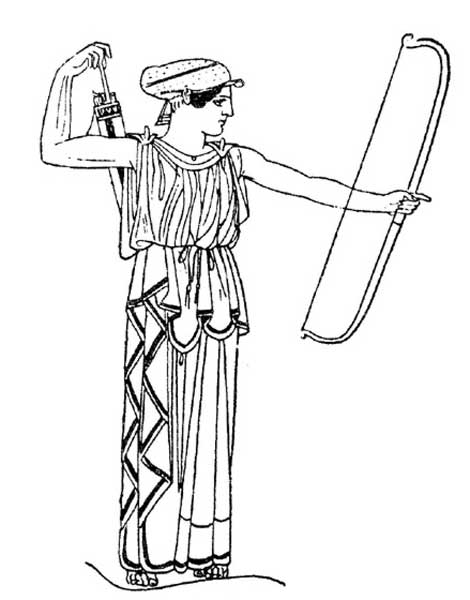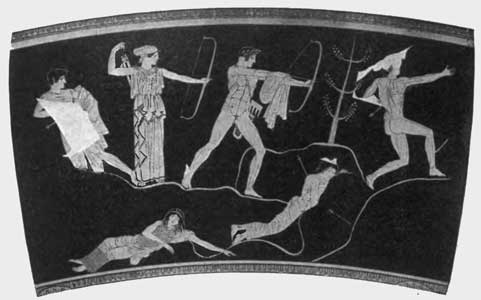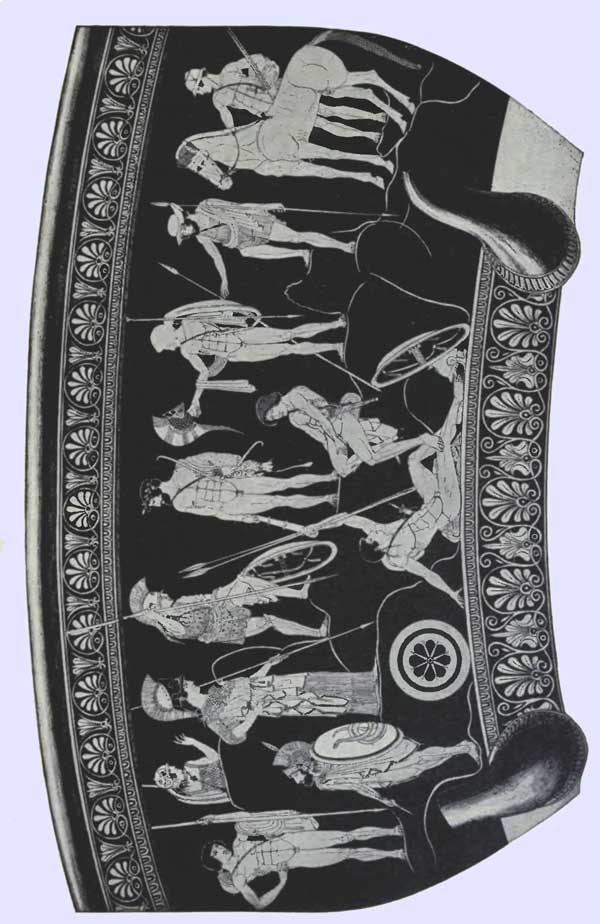.
The Niobid Painter was named after a krater which on one side shows the god Apollo and his sister Artemis killing the children of Queen Niobe who were collectively called the Niobids. There is some confusion as to what is being depicted on the opposite side as none of the figures are labelled. However, it is generally accepted that it is either the gathering of the Argonauts or the Seven against Thebes, though neither is certain.


Artemis, Apollon and the Niobids, Attic red-figure krater from the Louvre
This painter was influenced by Polygnotos of Thasos, and may also have used artistic elements he saw in frescoes painted by Mikon of Athens, which decorated the walls of Stoa Poikele. The krater is now housed at the Musée du Louvre in Paris.

Heracles and the gathering of the Argonauts (or Heracles in Marathon?). Attic red-figure calyx-krater, 460–/50
Artist
A - B - C - D - E - F - G - H - I - J - K - L - M -
N - O - P - Q - R - S - T - U - V - W - X - Y - Z
| Ancient Greece
Science, Technology , Medicine , Warfare, , Biographies , Life , Cities/Places/Maps , Arts , Literature , Philosophy ,Olympics, Mythology , History , Images Medieval Greece / Byzantine Empire Science, Technology, Arts, , Warfare , Literature, Biographies, Icons, History Modern Greece Cities, Islands, Regions, Fauna/Flora ,Biographies , History , Warfare, Science/Technology, Literature, Music , Arts , Film/Actors , Sport , Fashion --- |
Retrieved from "http://en.wikipedia.org"
All text is available under the terms of the GNU Free Documentation License

